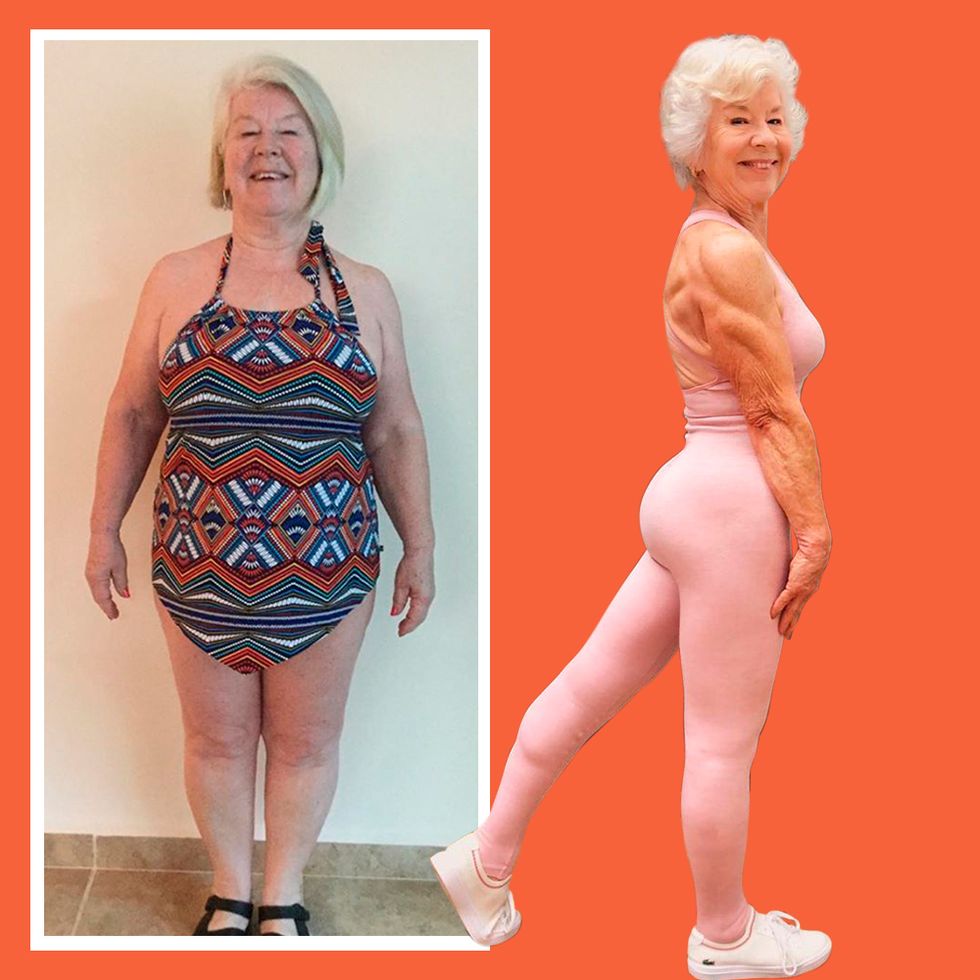Exercising our physical and spiritual muscles
Two years ago, I joined a gym and took up weight lifting. I had made the conscious decision to live a more disciplined temporal law. This also meant changing what I ate. I had just turned 50 and watched with growing consternation, my atrophying muscles, increasing weight gain, and decreasing strength and stamina. And, I still had a gigantic appetite. I had always been thin and could eat with abandon. Aging changed all that. Personal trainer and author, Brad Schoenfeld gives us sobering statistics:
After the age of 35, a woman loses roughly 1 percent of her muscle mass and bone density each year. A sedentary woman will lose about 10 percent of her fundamental body mass by age 45, 20 percent by 55, and so on . . . this progression compromises strength and endurance“
Sculpting Her Body Perfect, p. 22.
I didn’t need an expert to tell me this. I could see it with my own eyes. I had tried weight lifting at age 31, but with no prior preparation, I injured myself within a few weeks—and completely gave up. Twenty years later, the aging process compelled me to revisit the idea of using weights. This time, however, I worked out within the instructive and supportive environment of a gym. Joining a gym gave me no excuses to avoid working out. Watching the elderly and disabled people work the weight machines day after day, inspired me. Additionally, I asked God for guidance and help in changing my lifestyle. My spiritual education (including the Word of Wisdom) had taught me that all things temporal are also spiritual and vice versa. Many times over the years, and in trying to live this law, I have pondered Doctrine and Covenants, Section 29: 34-35:
Wherefore, verily I say unto you that all things unto me are spiritual, and not at any time have I given unto you a law which was temporal….I gave unto [man] that he should be an agent unto himself; and I gave unto him commandment, but no temporal commandment gave I unto him, for my commandments are spiritual; they are not natural nor temporal, neither carnal nor sensual.
Regarding spiritual growth, Joseph Smith taught:
- Faith is not only the principle of action, but of power.
- Faith is the moving cause of all action in temporal concerns, so it is in spiritual.
- Faith, then, is the first great governing principle which has power, dominion, and authority over all things (Lectures on Faith, pp. 8-10).
Surely, these principles apply to our physical selves; I liken these ideas to my own physical exercise and weight training—and the results have been remarkable. Within several months of consistent weight lifting, I felt 20 years younger. I’ve “outgrown” some of my jackets and blouses because my shoulder, back, chest, and arm muscles have grown almost three times their size—and, I’ve shrunk three jean sizes. In fact, my body looks better in my 50s than it did in my 20s. Again, I didn’t accomplish this on my own. Making covenants with God and His resulting divine intervention played a significant role. (D&C: 89 contains awesome promises in the Word of Wisdom.) Indeed, our physical and spiritual muscles are inextricably connected, and we need divine instruction and help to grow them. I often ponder and pray while doing my time in the gym; Schoenfeld’s weight training suggestions reflect my own physical and spiritual growth. I share his instruction (along with my own commentary) below:
In the beginning stages of weight training, you should acclimate your body (p. 22).

Me . . . trying to motivate myself to get to the gym.
Two years ago, I had to “decide to decide” in making permanent physical lifestyle changes to gain authority over my aging body. I’d never be 30 again. (Actually, I have no desire to be young again—I like being old, but an aging body . . . well . . .) Still, I don’t have to look and feel like a relic. In accepting this eternal law, I gained greater resolve and strength to move to a higher physical/temporal level. And, I’m so happy with the physical results that I will never go back to atrophied muscles or old eating habits.
Spiritually, I had already learned many of these principles. In my pursuit of spiritual and emotional growth, I’m learning to bend with God’s will and give up my worldly ways. It’s no picnic, and I’ve got a long road ahead. But staying where I’m at or going backward is not an option for me. Like physical training, our preparation and acclimation are crucial in building and strengthening our spiritual selves. This preparation includes goal-setting, decision making, petitions of faith in and to God, resolve, and action. Just as lifting that first weight does not bring immediate results (except for pain), we must act in faith before God will reveal Himself to us.
Your capacity to weight train at an intense level is hampered at first because weight lifting progression comprises strength and endurance (p. 22).
We all know what sore muscles feel like—even after mundane activities like picking up a heavy bag of groceries. After my first gym workout, I could barely drag myself back the next day. But each day got a little easier as my body adjusted and my strength increased. Similarly, spiritual growth or progression usually involves some sort of pain (actually, a lot of pain) and anxiety because it requires sacrifice. And change is scary and uncomfortable. Working through our anxiety and fear, we grow increasingly comfortable in “the new order of things” while progressing to a higher plane and settling into it. Inertia is a powerful temporal and spiritual force, and apathy is its best friend.
Although weight lifting reverses the effects of aging, it will take a little more time. Results will take awhile to see, so patience is required. Training can have profound effects on improving bone density, strength, and other aging-related factors provided it is done properly. Even with proper acclimation, however, you should expect to experience a mild degree of muscular soreness. (In other words …. pain.) This pain is especially prevalent in the first few weeks of training. You may continue to feel sore even after becoming an accomplished trainee. Although the pain shouldn’t be too severe, there will be some tenderness and sensitivity in the muscles that you trained. Unfortunately, soreness is a necessary by-product of training“
p. 22.

Joan MacDonald is 74-years-old and says she is in the best shape of her life. At age 70, she was taking many medications, had no energy, and knew she would suffer from a stroke (like her mother) if she didn’t change her lifestyle.
At age 70, she started weight lifting and strength training. Her physical and emotional self has completely changed.
Have you ever tried to start a good habit? Ever tried dieting? It’s easy to start but very difficult to keep going. Interestingly, when beginning my weight lifting program, I didn’t expect to see or feel muscle definition or firmness. (In other words, a “hard body.”) All I wanted was my strength back—and I was willing to do whatever it took to get it. Either way, I knew I’d made great progress when my daughter noticed my muscle definition. And I grew muscles I never knew existed—hamstrings for one. Lying on my side in bed one night, I realized how hard my thighs and calves had become. Another discovery: If I go just two days without weight lifting, I can expect extra sore muscles when I resume. Fairly sore muscles have become a way of life for me now—whether or not I lift daily. I’ve decided that mild soreness is a good thing—a small price to pay for a firm body. These principles also pertain to spiritual growth. Faith requires consistent action before we see results. Alma likens this principle to a seed and how it requires our constant nourishment—even before we see the growing plant grow through the soil (see Alma: 32 in the Book of Mormon). Surely, sustained efforts are difficult in any endeavor when results are not immediate.
Training aids the circulation of blood through your muscles and connective tissue, which can accelerate recuperation. Training arises from microscopic tears that occur from the stress of weight training, which subsequently cause internal swelling in your muscles and connective tissue. This is an indication that your body is adapting to the demands of exercise and preparing itself for the next training session”
p. 22.
Training also aids in blood circulation to our brains which in turn re-energizes the brain’s circuitry. One of my desires (and subsequent covenant with God) had included a revitalized memory and vocabulary. In my teaching profession, a sharp brain is a prerequisite. Students show no mercy for stammering, stuttering, or forgetful professors. Within four to five months of prayer and diligent physical exercise, I noticed my resuscitating vocabulary: When I spoke, the “right words” instantly materialized—my “mind fog” was lifting. What’s more, I no longer rely so much on my PowerPoint slides during my class presentations. Again, my revitalized brain wasn’t an automatic gift from God. I had to work for it—physically and spiritually. And I had to wait with faith and patience for results.
Likewise, our spiritual progression includes trials of our faith. We will feel and suffer spiritual “microscopic tears” due to the stress of spiritual growth. Thankfully, these trials serve a purpose: They strengthen our spiritual muscles. In his book, Drawing From the Powers of Heaven, Grant Von Harrison says:
A period of proving, or a trial of faith, is necessary to see if someone who is seeking a special blessing from the Lord will remain faithful in the face of opposition. If a person understands that his (or her) faith is going to be tried, it gives him a greater resolve to be persistent in times of opposition. Your trials of faith serves four functions: 1) it determines if a goal you are seeking is truly a desire; 2) it lets you learn if you are really dedicated to the Lord; 3) it is a means of purging you so that you become clean, pure, and spotless—literally free from the blood and sins of the world; and 4) it humbles you and brings you to the realization that you cannot rely ‘on the arm of flesh.’ As you learn to endure your trials of faith you will literally become a new creature in Christ and your body will be cleansed of all sin and renewed by the Spirit of the Lord. This is the process of rebirth and sanctification“
p. 55.
And every word in this quote has a physical and temporal application.
Try to avoid being completely sedentary, even mild activity can increase circulation to body tissue and accelerate the healing process (p. 22).

When away from home or on vacation, my weight lifting routine is interrupted. Even after just two weeks of non-training, I have a lot less strength and stamina when I hit the gym again. Thankfully, my muscles and strength have the ability to “bounce back” more quickly than when I initially began training. Still, I must exert extra effort to bring my muscles back to where they were before. Likewise, consistency is crucial in sustaining any kind of spiritual and emotional growth. An “either/or” or “all or nothing” approach to any kind of spiritual, temporal, or emotional growth will keep us stuck, discouraged, and vulnerable to temptation and buffetings of the adversary.
Train large muscle groups first. If you train smaller muscles first, they’ll be less able to serve as secondary movers in exercises for the larger muscle groups. Ultimately, your secondary muscles will fatigue before your primary muscles, and you won’t achieve maximal stimulation of the target muscles. Make sure you’re knowledgeable about the basic movements and principles before advancing to the next level. Make sure you are willing and able to increase your exercise intensity. It’s one thing to want to train on a more advanced basis; it’s quite another to endure the intensity required for this progression”
p. 22.

Growing spiritually requires the same mindset. The scriptures teach us to learn “line upon line, precept upon precept … here a little, there a little until we receive a fulness” (D&C 128:21). Like everything else, we start with the basics in building and growing—along with a willingness and commitment to get out of our comfort zones.
Recently, while attending a women’s conference, I spoke to a woman who was very unhappy with her weight and appearance. I had known her when she had been young and very trim. She said, “Julie, you have it easy staying thin because you’ve always been that way.” Gently, I reminded her that my appearance and weight were the results of resolve and hard work. “Sarah,” I said to her, “I had to make a serious attitude adjustment in terms of my aging body. None of us want to grow frail or overweight, but it’s inevitable unless we choose between our present lifestyle or consciously and effortfully transition to a better one. I chose to sacrifice my old habits and learn new ones in order for my body to get to this point.” We all have a tendency to judge each other’s circumstances and abilities—be they temporal or spiritual. Still, we cannot begrudge the spiritual and/or emotional, or temporal progression of others if we aren’t willing to pay the same price they did to attain it. Fortunately, this ability is within each of us. God has granted us stewardship over our minds and bodies, and He strengthens our able-ness.
D&C 130: 20-21 summarizes these eternal principles:
There is a law, irrevocably decreed in heaven before the foundations of this world, upon which all blessings are predicated. And when we obtain any blessing from God, it is by obedience to that law upon which it is predicated.
Truly, for every desired temporal or spiritual blessing, a price of admission is required. Are we willing to pay it? As I prepare for Christ’s second coming, I want to be physically strong and able to effectively serve. Physical and spiritual frailty doesn’t cut it for me. Besides, after every sweat-drenched workout, I exit the gym feeling like I’ve conquered the world!
Here’s to a patient wait while lifting our life’s weights,
Julie

